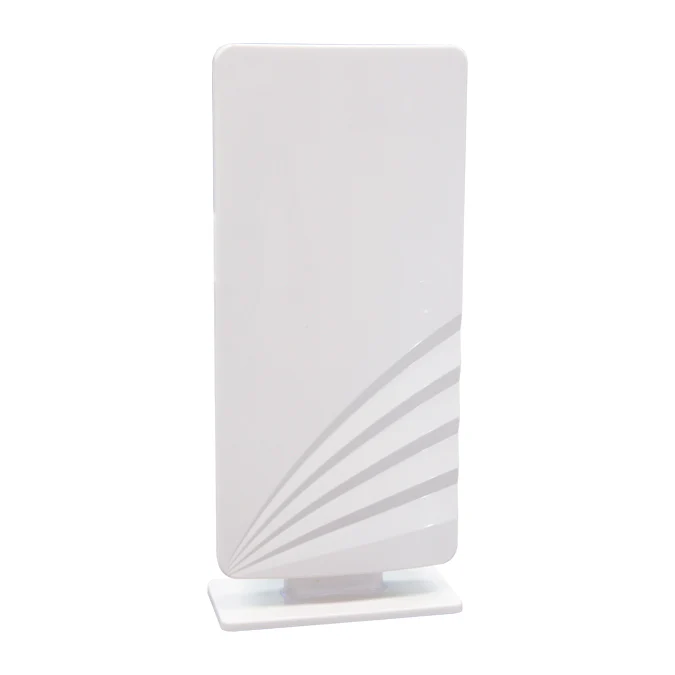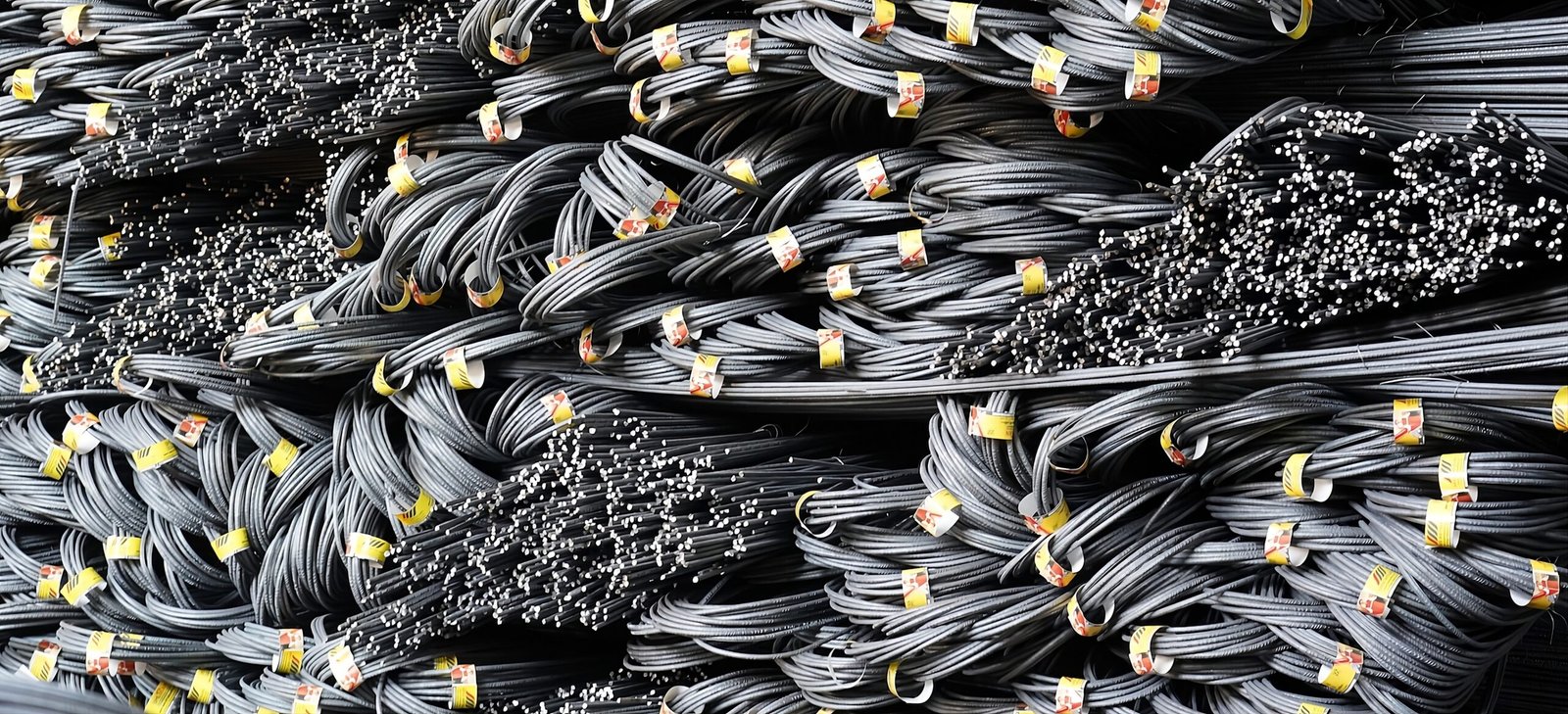An HD TV free antenna is a device that enables you to watch high-definition television channels without the need for a cable or satellite subscription. By receiving over-the-air (OTA) signals broadcasted by local TV stations, these antennas provide access to popular networks such as ABC, NBC, CBS, PBS, and more, all for free. HD TV antennas are designed to capture high-quality digital signals, providing you with clear pictures and sound. With the increasing popularity of cord-cutting, an HD TV free antenna is becoming a go-to solution for many viewers who want to enjoy free, high-definition content without recurring fees.
How HD TV Free Antenna Works
HD TV free antennas capture over-the-air digital signals broadcast by local stations and transmit them to your television. These signals are available in both high-definition (HD) and standard-definition (SD) formats, depending on the station. The antenna connects to your TV through a coaxial cable and uses its built-in tuner to decode the signals. Once received, the TV processes the signals and displays the content on the screen. The reception quality of an HD antenna depends on factors like your location, the strength of the broadcast signal, and any obstructions such as buildings or trees that might interfere with the antenna’s ability to pick up the signal.
Benefits of Using an HD TV Free Antenna
The primary benefit of using an HD TV-free antenna is the ability to watch live TV without paying for cable or satellite services. With just an antenna, you can access high-definition content from local broadcasters, including national channels like ABC, NBC, and CBS, and regional ones. Another major benefit is the high-quality picture and sound that HD antennas offer, often surpassing the quality of analog signals. Additionally, HD antennas require no ongoing fees, making them an excellent choice for those looking to reduce their monthly expenses. By cutting out cable costs, you can enjoy free TV content at no additional cost.
Types of HD TV Free Antennas
There are several types of HD TV free antennas available, each catering to different needs and preferences. The most common types are indoor antennas, outdoor antennas, and amplified antennas. Indoor antennas are small, compact devices that can be placed near windows to capture signals. They are ideal for those who live close to broadcast towers and don’t need a long-range antenna. Outdoor antennas are larger and designed for mounting on rooftops or poles to capture signals from a greater distance. Amplified antennas come with built-in signal boosters, improving reception in areas with weaker signals. The type of antenna you choose depends on your location and reception needs.
How to Choose the Right HD TV Free Antenna
Choosing the right HD TV free antenna involves considering several factors, such as your location, the distance to local broadcast towers, and the type of channels you wish to receive. For urban areas with strong signal reception, a simple indoor antenna may suffice. However, if you live in a rural or suburban area with weaker signals, you may need a more powerful outdoor or amplified antenna to ensure good reception. It’s also important to think about the size and design of the antenna, as well as its compatibility with your TV. There are online tools available to help you determine the best antenna for your location based on the distance to the nearest broadcast towers.
Setting Up an HD TV Free Antenna
Setting up an HD TV-free antenna is a straightforward process. If you’re using an indoor antenna, simply place it near a window or in an area with minimal interference. Connect the antenna to your TV using a coaxial cable, and then perform a channel scan through your TV’s settings to find available channels. For outdoor antennas, mount the antenna on your roof or a pole in an area where it has a clear line of sight to the broadcast towers. Once the antenna is installed, connect it to the TV and run a channel scan to ensure you’re receiving the best possible signal. Adjust the antenna’s position if necessary to optimize reception.
Common Issues with HD TV Free Antennas
Although HD TV free antennas are generally reliable, users may experience occasional issues. One of the most common problems is poor signal reception, especially in areas with weak or obstructed signals. Factors such as distance from broadcast towers, interference from nearby electronics, or physical obstructions like buildings or trees can affect reception. To resolve this, try repositioning the antenna, moving it closer to a window, or mounting it higher for better signal strength. Another issue is pixelation or signal dropouts, which can occur if the antenna is not properly aligned with the broadcast towers. A signal amplifier may also help improve reception in areas with weak signals.
Advantages of cable or Satellite TV
One of the most significant advantages of using an HD TV-free antenna is the cost savings compared to cable or satellite TV. Cable and satellite services typically require monthly subscriptions, which can add up over time. With an HD antenna, there are no ongoing fees, and you only need to pay for the antenna itself, which is often a one-time cost. Additionally, HD antennas offer access to local broadcast channels, which can include national networks such as ABC, CBS, NBC, and PBS. By using an HD antenna, you can eliminate cable bills while still enjoying free over-the-air content in high definition.
How to Improve Reception with Your HD Antenna
If you’re experiencing poor reception with your HD TV free antenna, there are several ways to improve signal quality. First, try repositioning the antenna. Placing it near a window or higher up in the room can help reduce signal interference. If you live in a rural area, consider installing an outdoor antenna for better range and signal strength. If the antenna has an amplifier, make sure it is correctly powered and functioning. In areas with multiple broadcast towers, rotating or adjusting the antenna’s direction can also help improve reception. Additionally, removing any electronic devices that could cause interference can make a significant difference in signal quality.
How Much Does an HD TV Free Antenna Cost?
The cost of an HD TV free antenna can vary depending on the type, brand, and features. Basic indoor antennas are generally affordable, with prices ranging from $20 to $50. Outdoor and amplified antennas tend to cost more, with prices ranging from $50 to $150 or higher. While there is an initial investment in purchasing the antenna, the long-term savings are significant. Unlike cable or satellite TV, there are no monthly fees or contracts with HD antennas. Once the antenna is set up, you can enjoy free over-the-air content without any ongoing costs, making it a cost-effective alternative to traditional TV subscriptions.
HD TV Free Antenna vs. Streaming Services
While streaming services provide access to a wide variety of on-demand content, they require a reliable internet connection and typically involve monthly subscription fees. In contrast, an HD TV free antenna provides access to live, over-the-air television broadcasts for free, with no internet or subscription required. HD antennas offer high-definition content from local networks such as ABC, CBS, and NBC, which is not typically available through streaming platforms. However, streaming services do provide a broader range of content, including original series, movies, and niche channels. Many cord-cutters opt to use a combination of an HD antenna and streaming services to get the best of both worlds.
Compatibility with 4K TVs
Many modern HD TV free antennas are compatible with 4K televisions, allowing you to receive high-definition broadcasts in 4K resolution. However, it’s important to note that not all over-the-air broadcasts are available in 4K. While some networks may offer 4K content, the majority of broadcast channels are still transmitted in HD. In the future, as more broadcasters adopt 4K technology, HD TV antennas will likely continue to evolve to support ultra-high-definition programming. For now, if you own a 4K TV, you can still enjoy a great viewing experience using an HD antenna, though the content may be in 1080p rather than 4K.

Choosing Between Indoor and Outdoor HD Antennas
When selecting an HD TV-free antenna, it’s important to consider whether an indoor or outdoor antenna is the best fit for your home. Indoor antennas are compact, easy to set up and work well in areas with strong signals. If you live in a rural or suburban area, or if there are obstructions that block the signal, an outdoor antenna may be a better choice. Outdoor antennas are larger, more powerful, and capable of picking up signals from greater distances. If you need an antenna that can handle weak signals or long-range broadcasts, an outdoor antenna is the ideal solution.
The Future of HD TV Free Antennas
The future of HD TV free antenna looks promising as technology cadvances With the rise of 4K broadcasting, future HD antennas will likely evolve to support higher resolutions, providing even sharper picture quality. Additionally, new antenna designs may offer improved signal reception, particularly in areas where broadcast towers are distant or obstructed. As more viewers move away from traditional cable and satellite TV, the demand for HD TV antennas is likely to increase. With ongoing advancements in digital broadcasting, the future of HD TV antennas promises to deliver even more high-quality, free content to viewers across the country.
FAQs About HD TV Free Antennas
Can I use an HD TV free antenna with any TV?
Yes, you can use an HD TV-free antenna with any television that has a built-in digital tuner. Most modern TVs are equipped with a digital tuner, so you should be able to receive over-the-air broadcasts without any issues. If your TV is older and lacks a digital tuner, you can still use an HD antenna by purchasing a separate digital converter box.
How many channels can I get with an HD TV-free antenna?
The number of channels you can receive with an HD TV free antenna depends on your location, the strength of the broadcast signals, and the type of antenna you use. In urban areas with strong signals, you can typically receive 20 to 50 channels or more. In rural areas, you may receive fewer channels, but using an outdoor or amplified antenna can help improve reception.
Do I need an internet connection for an HD TV-free antenna?
No, an HD TV-free antenna does not require an internet connection. It works by capturing over-the-air broadcast signals, which are available without the need for internet access. However, if you want to combine your antenna with streaming services, an internet connection will be required for those services.
Read for more












Leave a Reply